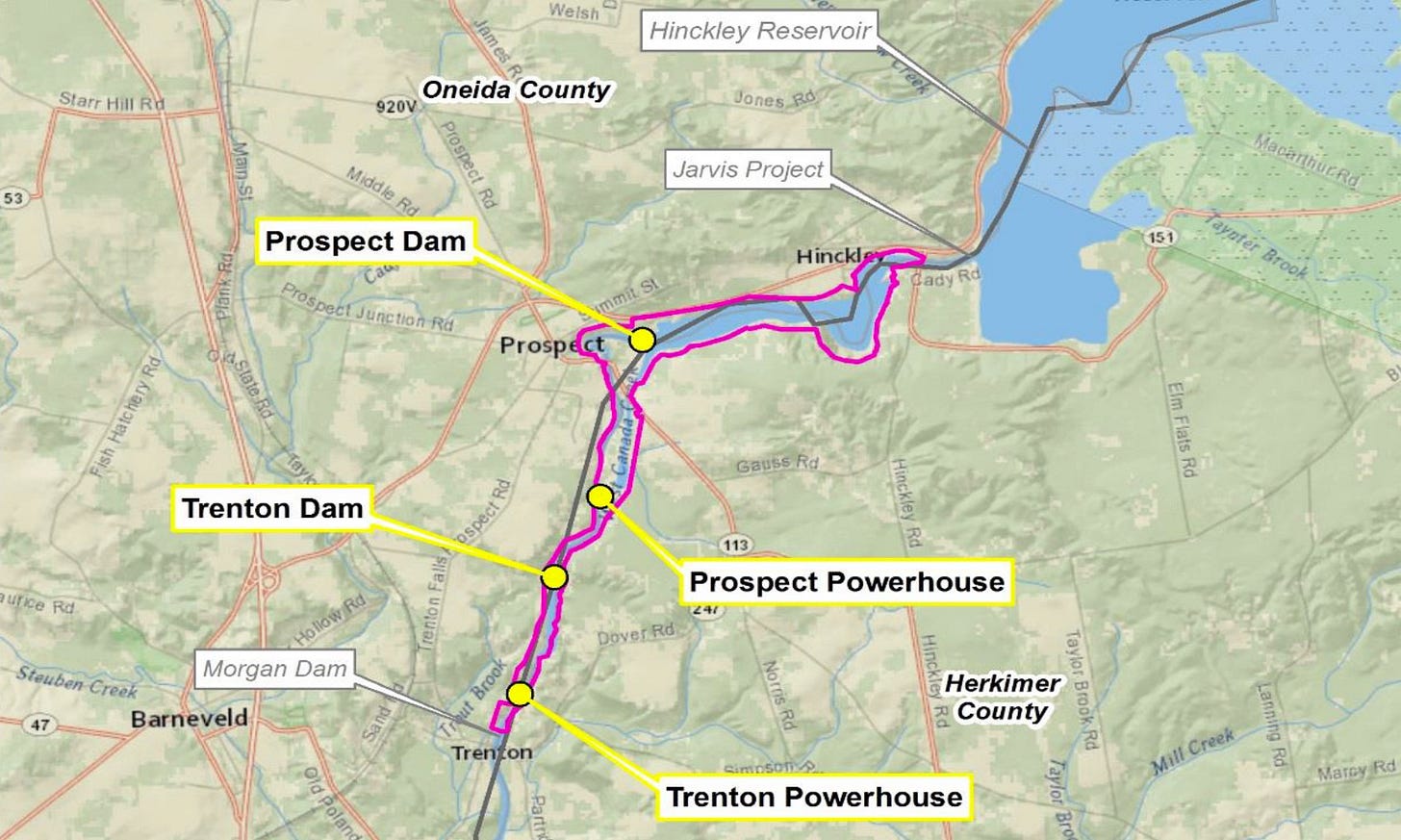Dam failure and dam breach are critically important for the safety of those who live below them. That is why in 2009 New York State modified its dam safety regulations, and in effect these changes increased the responsibility of dam owners. The law requires regular safety inspections, reporting, and protocols for the dissemination of information in case of emergency. This is particularly so for Intermediate (Class B) and High hazard (Class C) dams. In NYS dams are classified and regulated on their hazard potential.
There are three dams of concern on upper part of the West Canada Creek (WCC) – the image below is from the Initial Scoping document for the Trenton Falls/Prospect FERC re-licensing (April 2018). The Flood and potential dam failure Watch issued by the NWS in Binghamton on 2 Nov (now expired - see below) was for the Trenton Falls dam, which is owned by Brookfield Power. This dam, incidentally, is currently up for FERC re-licensing.

Part of a map showing dams on the West Canada Creek from the FERC re-licensing document by Brookfield power (2018).
The Hinckley dam is a NYS class C (high hazard) dam, and below this on the WCC is the Prospect and Trenton Falls dams are both Class B (intermediate hazard). The hazard potential is directly related to the potential loss of life and property damage in the event of dam failure (the rating has nothing to do with the state of dam upkeep of repair). For both Class C-High Hazard and Class B-Intermediate Hazard dams, owners are required to have a detailed Emergency Action Plan (EAP) for use in the event of a developing dam failure or other uncontrolled release of stored water – this this includes events where an auxiliary spillway was used.

This warning was released by the NWS immediately following crest of the Halloween storm.
The EAP for a dam has to be written and activated in consultation with local emergency managers and NYS law required that there is a clear annually reviewed Notification Flow Chart. This flow chart is the communications tree that is used in an emergency.
Finally note that the EAP (Class B or Class C) includes, among other things, procedures for the notification of an emergency, and inundation maps or a description of the potential inundation area, which may include a dam break analysis.
It is my understanding from the State that the EAP was activated for the Trenton Falls dam in the 2019 Halloween storm. But because this dam in under FERC jurisdiction, it is required to follow Federal laws and regulations, and not those of NYS. According the NYS DEC, because the Trenton Falls dam is considered a Critical Facility, the EAP is not publicly available.
It seems to me that residents below these dams should enjoy the same flow of information in the event of a dam emergency. Elsewhere this means that coordination goes through the Emergency Management office of Herkimer and Oneida counties. It also means that plans and procedures are open and transparent. As we learned in Irene on the Schoharie Creek, warning systems save lives when activated.
This and other Notes from a Watershed are available at: https://mohawk.substack.com/

